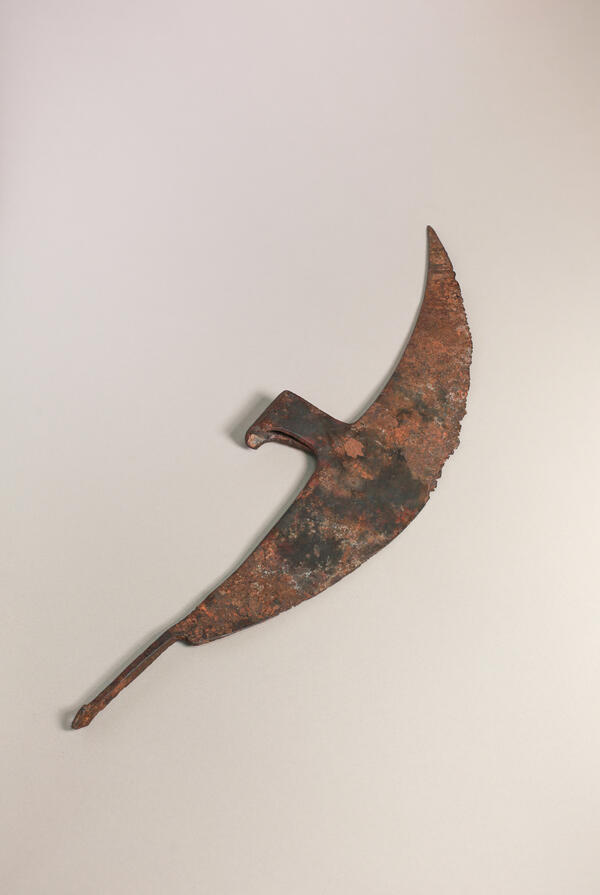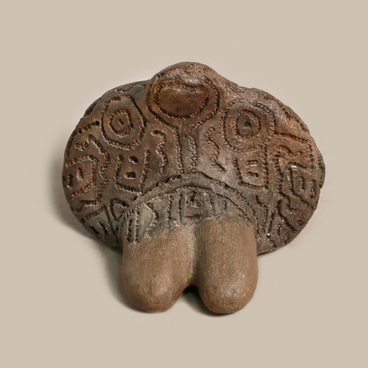The exploration of Siberia lasted more than a century and was accompanied by numerous clashes with the local population. Russian troops were armed with several types of weapons. One of them was bardiche — a cold cutting pole weapon. A bardiche was similar to an ax with a blade in the form of an elongated crescent. Most often it was used in the 16th–17th centuries. Similar weapons were found in the Middle Ages in many Western European countries and countries of the East. When the bardiche appeared on the territory of Russia, scientists have not been able to reliably establish it until now. According to one of the versions, it happened in the first half of the 15th century.
Until the middle of the 17th century, a bardiche was made in suburban (city) and village smithies, not always from high-quality raw materials. This weapon was not expensive, so that every warrior could buy it. Masters made so many bardiches that they did not brand them, unlike individual swords.
The form of a bardiche was changing with time, but in 1656, a special decree was issued about introducing the unified standard. This allowed unifying the appearance of the weapon.
Western Siberia had no production of its own, so weapons with long shafts were supplied from the European part of Russia. Deliveries were irregular, and some garrisons lacked bardiches. In March 1675, there was a tsar decree forbidding local servicemen to sell bardiches to “any foreigners”. This measure helped tsar commanders to provide their troops with weapons.
The bardiche from the archeological collection of the History and Art Museum Complex has an unusual story. According to a legend, the Khanty attached a bardiche, lost by the Russian troops, to an oblas — a dugout canoe, and performed a ritual procession before fishing. It was believed that this ceremony opened the passage for fish from the Bolshoi Salym River to Syrkovy Sor Lake. Later, the tool was placed in the sacred barn of Sotym-te-ike and hold sacred as a weapon of the legendary bogatyr. The bardiche of the 17th century is the only Russian object displayed at the exhibition “Ugra Heritage”.
Until the middle of the 17th century, a bardiche was made in suburban (city) and village smithies, not always from high-quality raw materials. This weapon was not expensive, so that every warrior could buy it. Masters made so many bardiches that they did not brand them, unlike individual swords.
The form of a bardiche was changing with time, but in 1656, a special decree was issued about introducing the unified standard. This allowed unifying the appearance of the weapon.
Western Siberia had no production of its own, so weapons with long shafts were supplied from the European part of Russia. Deliveries were irregular, and some garrisons lacked bardiches. In March 1675, there was a tsar decree forbidding local servicemen to sell bardiches to “any foreigners”. This measure helped tsar commanders to provide their troops with weapons.
The bardiche from the archeological collection of the History and Art Museum Complex has an unusual story. According to a legend, the Khanty attached a bardiche, lost by the Russian troops, to an oblas — a dugout canoe, and performed a ritual procession before fishing. It was believed that this ceremony opened the passage for fish from the Bolshoi Salym River to Syrkovy Sor Lake. Later, the tool was placed in the sacred barn of Sotym-te-ike and hold sacred as a weapon of the legendary bogatyr. The bardiche of the 17th century is the only Russian object displayed at the exhibition “Ugra Heritage”.



